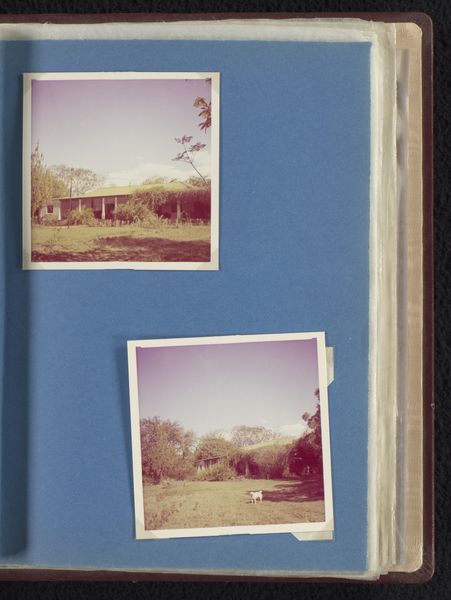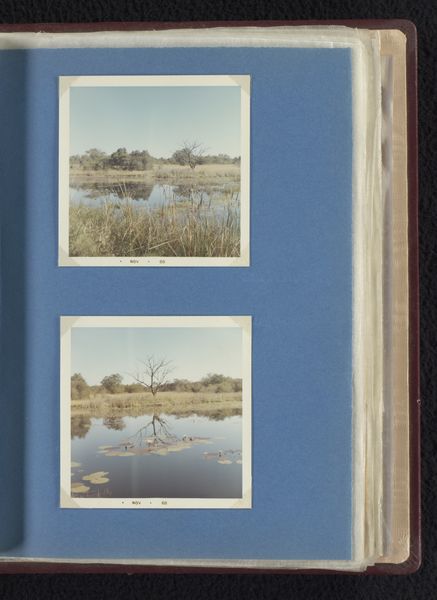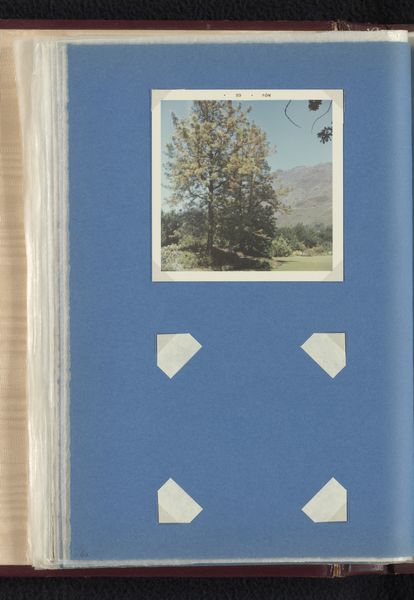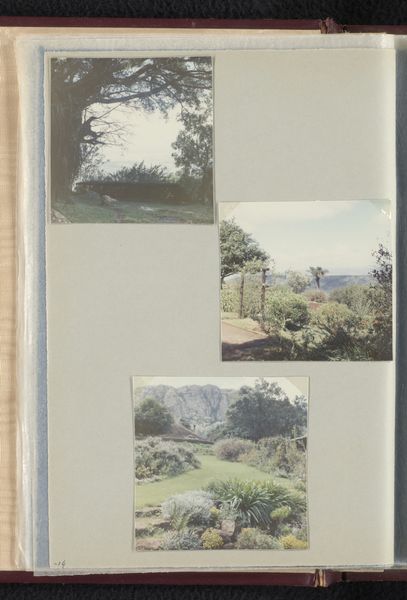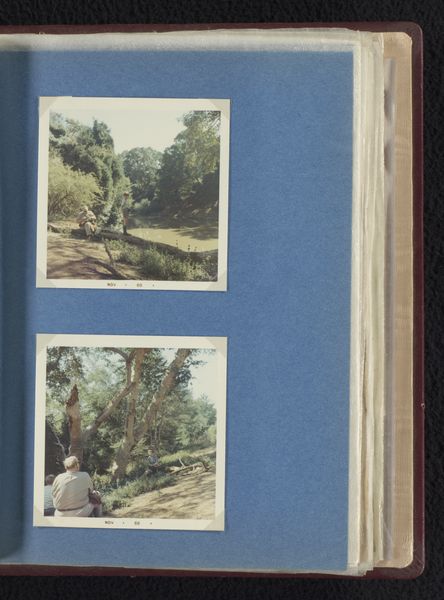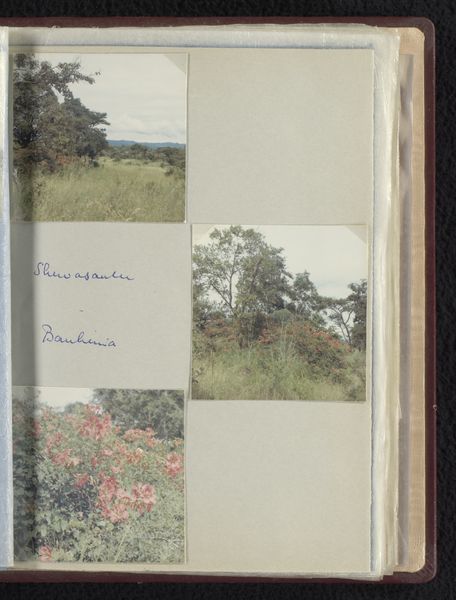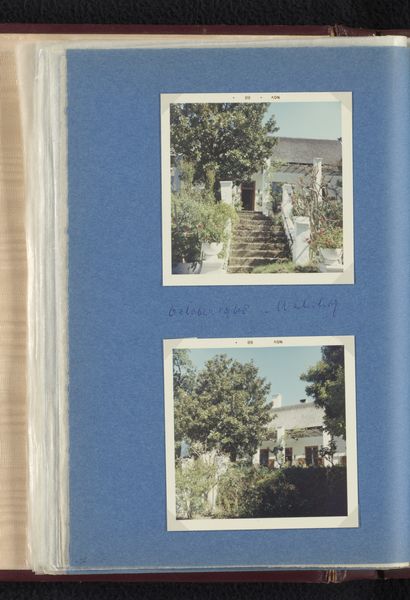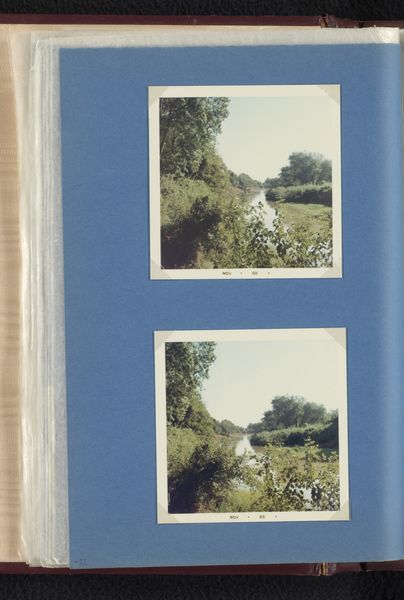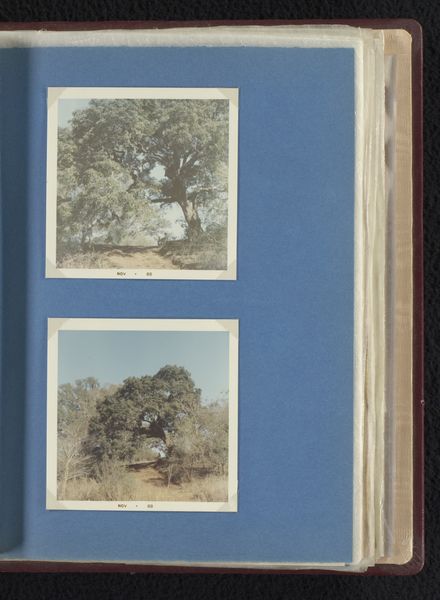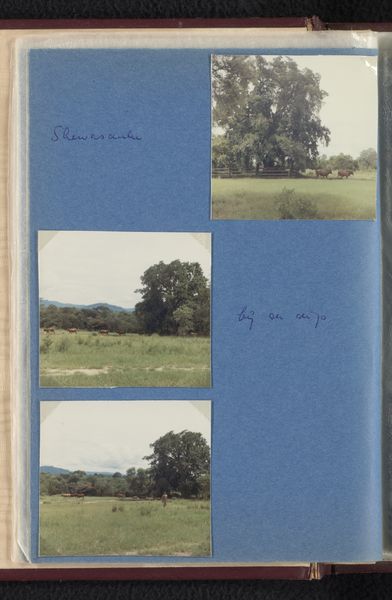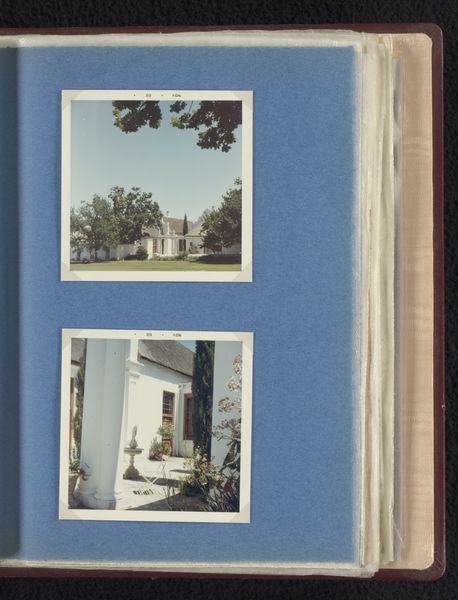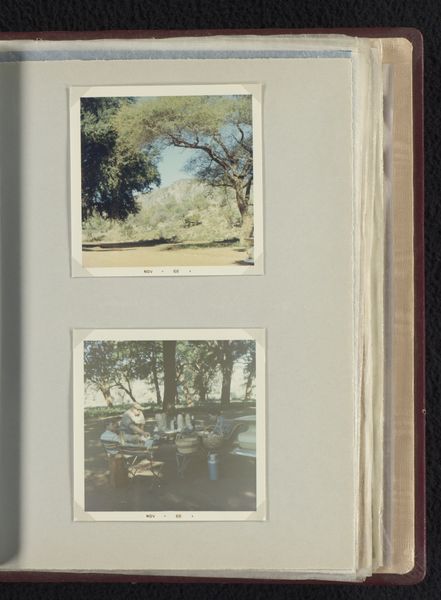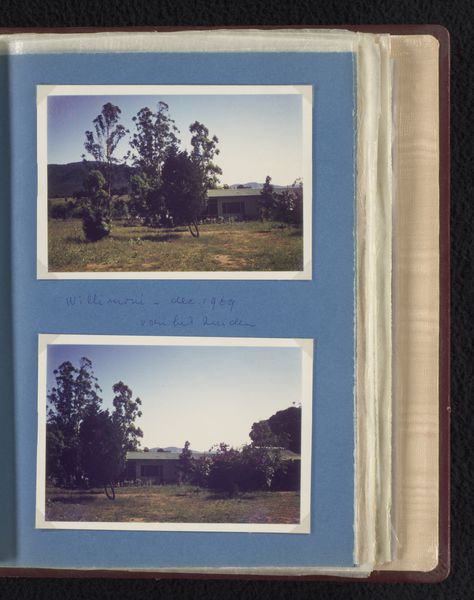
Hond bij het woonhuis van Willem van den Berg in Shewasaulu, Zuid-Afrika 1967
0:00
0:00
c-print, photography
#
portrait
#
dog
#
landscape
#
c-print
#
photography
#
coloured pencil
Dimensions: height 240 mm, width 190 mm
Copyright: Rijks Museum: Open Domain
Curator: Here we have a piece entitled "Hond bij het woonhuis van Willem van den Berg in Shewasaulu, Zuid-Afrika," or "Dog at Willem van den Berg’s House in Shewasaulu, South Africa" by Willem Jacob van den Berg, created in 1967. It's a c-print photograph, small and seemingly a part of a larger photo album compilation. Editor: My immediate impression is one of distance. These snapshots feel far removed, not just geographically but also temporally. The colors are muted, giving them a nostalgic haze. Curator: Indeed. Van den Berg seems interested in capturing two different facets here: the domestic space implied by the house and the open landscape punctuated by the dog, which almost appears spectral in the upper image. Editor: The dog, positioned centrally within its frame, is definitely a focal point. Dogs often serve as symbols of loyalty and companionship. Placed in this rather sparse landscape, it could suggest themes of solitude or guardianship. Curator: That's compelling. I am drawn to the formal balance of the compositions themselves. Each photo presents a horizon line approximately one-third of the way up the frame, creating stable visual grounds. The trees in both images also act as strong vertical elements which creates harmony. Editor: And there is a real interplay between civilization and nature too; that is, each photograph portrays dwellings--a dog and a house. Perhaps these represent different versions of home life as an exploration of van den Berg's domestic ideology. Curator: Interesting thought. I am less focused on those cultural signifiers, but can still see how those relational symbols make it complex. It’s how these elements balance each other in space, those formal tensions, that ultimately structure meaning. Editor: I find it powerful to see how even simple images can carry layered symbolism that reflects cultural narratives and private meaning-making. Curator: I agree it speaks to many issues, but ultimately this analysis emphasizes to me the beauty of pure pictorial balance achieved with a fine lens. Editor: Agreed; now that you point it out, it seems to portray not just a family dog, but a specific relationship with land in this specific time and place.
Comments
No comments
Be the first to comment and join the conversation on the ultimate creative platform.
